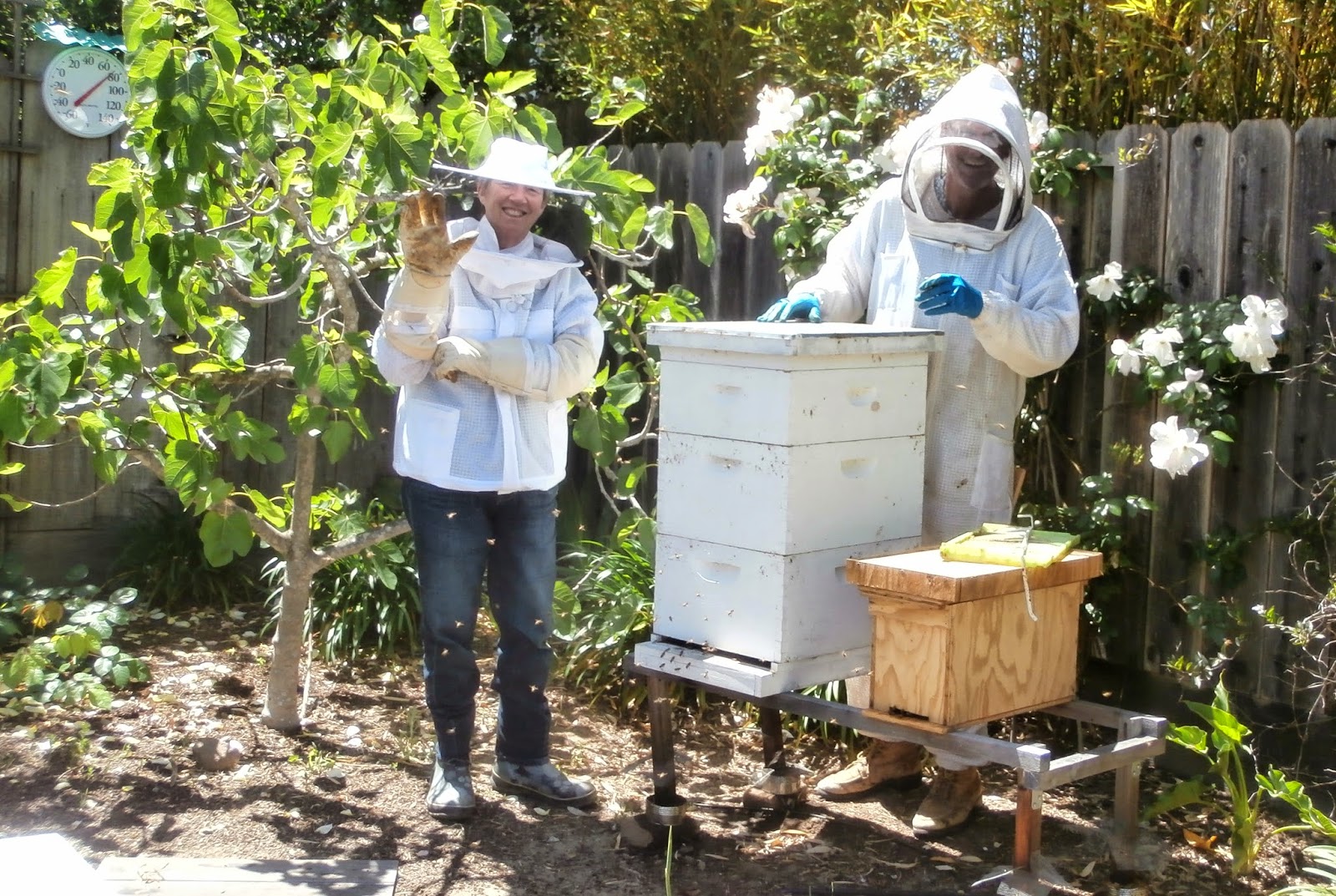This past weekend I attended the
short (2 day) queen rearing class given at the UC Davis Apiculture center. It was run by Elina and Bernardo Niño. The class consisted of a series of talks, visits to the apiary for demonstration of techniques and hands on practice of grafting. I learned quite a bit and had a chance to meet and chat with other beeks. The most basic lesson I learned is that my apiary and goals are not conducive to queen rearing! However, I will share with you what else I learned.
There are several methods to rearing queens all of which make several queens at a time. What they all have in common is firstly one needs a cell builder hive, a queenless box full of nurse bees who make the queen cells and secondly, a finisher, usually a queenright hive with a queen excluder where the cells are taken care of. One can use the starter hive as the finisher, but to do so the cells all need protectors. In either case, when the queen cells are 10 days old, a couple of days before they are expected to emerge, they are moved into mating nucs, one queen per nuc. These nucs are queenless and are made of open and emerging broods, a frame of honey and pollen and lots of nurse bees.
What this means is that if I successfully made 15 queen cells, I would need 15 mating nucs, a total of 60 frames of brood! With my two hives, I have maybe 10-12 frames of brood, and, of course, I would not want to take all the brood from my hives. I think I'll stick to my one queen at a time by making splits as I have been.
Grafting is the most common method to rear queens as it produces large numbers. One takes 1-2 day old larvae and places them into queen cups that have a small amount of royal jelly in them. 15 cups fit on a bar and the special frame holds 3 bars for 45 potential queens. Finding the larvae requires strong light and good eyes or magnification. There are a
variety of grafting tools available and they all require practice.
Here is my grafting station set up and ready to go. We need to keep the larvae moist with a damp paper towel. Using the pipette to place the royal jelly was a skill I lacked. I had a difficult time even finding the larvae using a magnifier. As Elina said, if you can see the larva it is too big (old). Then I would often push the larva against the cell wall rather than scooping. I did manage to graft the right size into the cup with the proper amount of royal jelly less than 10% of the time.
The second day, we looked to see how the grafts were doing. These are someone else's cups. The bees have started building the cells around some. The other cups either did not have a larva, the larva was drowned in the jelly or it was too old.
We can go back on the 20th to pick up our queen cells, but I will not be able to go that day so any queens I made will go to another student or to Bernardo.
Other methods we learned were
Miller, Hopkins and
Jenter. The Hopkins uses q-tips to protect selected larvae. The rest of the larvae are killed by sprinkling on powdered sugar. The q-tips are removed and the frame placed horizontally in a queenless box. When the cells are capped, they are pinched or cut out and placed into the mating nuc. This shows drawn queen cells using the Hopkins method.
A frame held by Bernardo demonstrating the Jenter system.
Bernardo likes to use a queen castle as a mating nuc. It is a large box that is essentially four, 2-frame nucs each with its own entrance.
 |
| Bernardo's queen castle |














